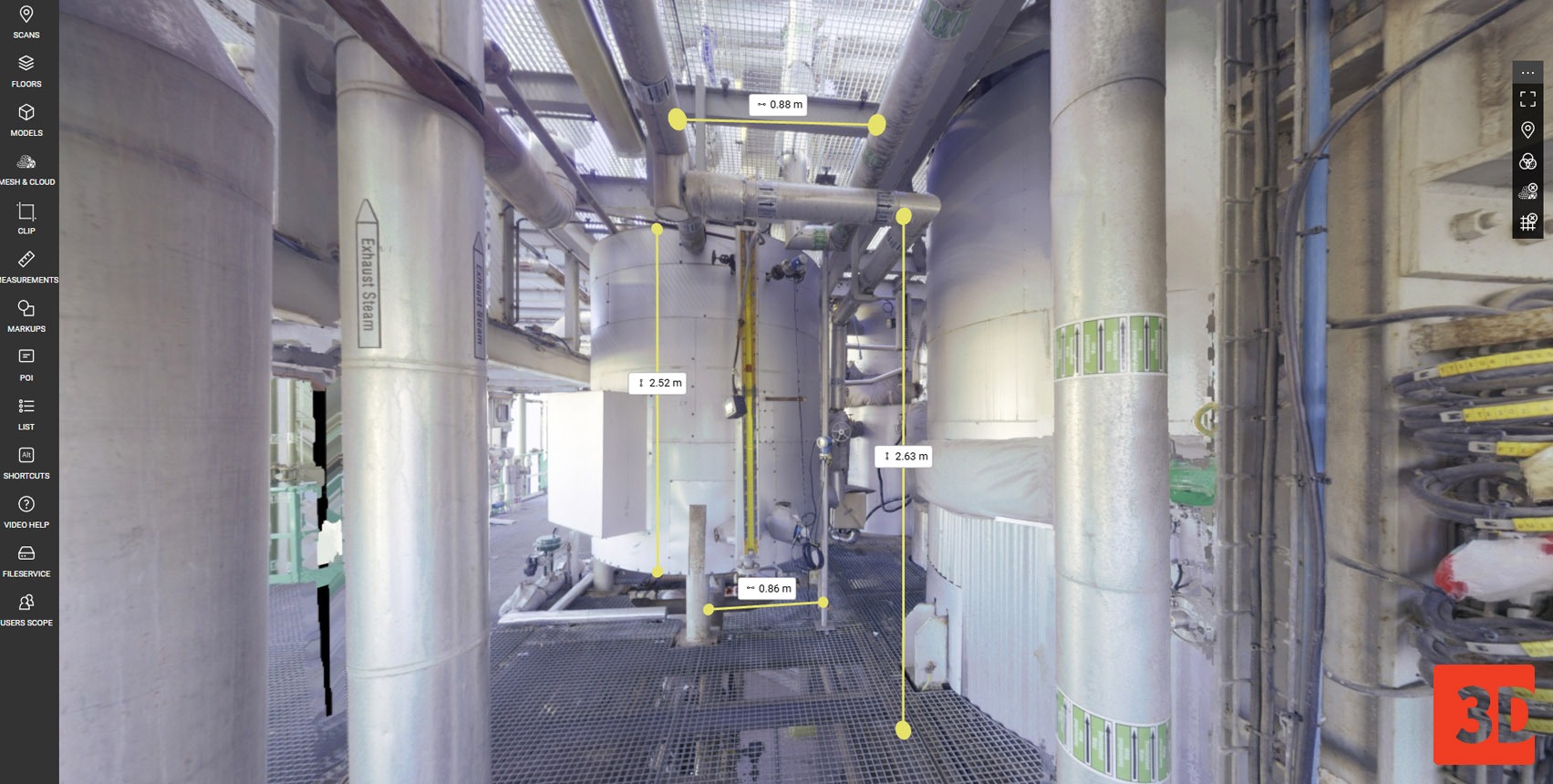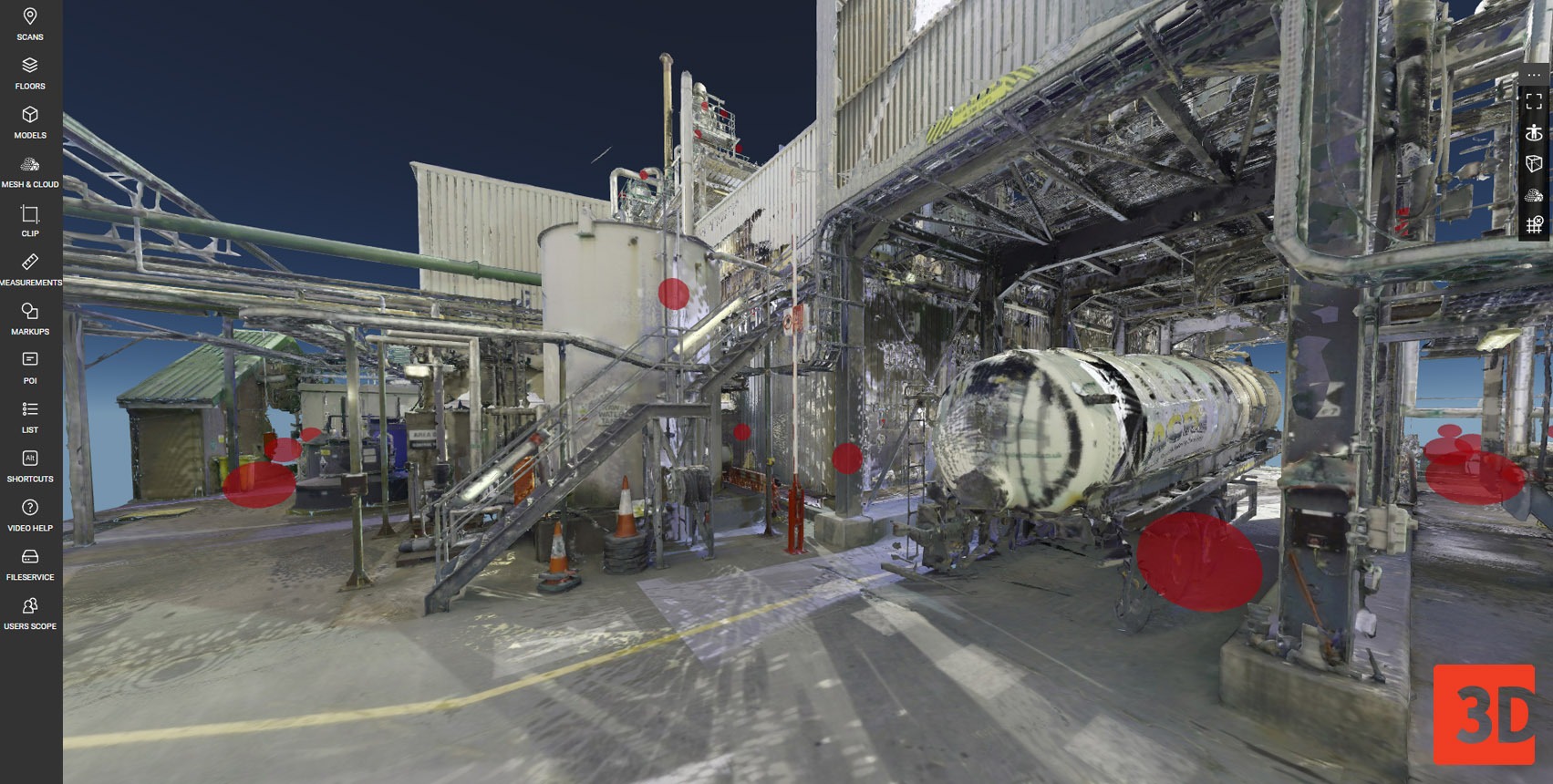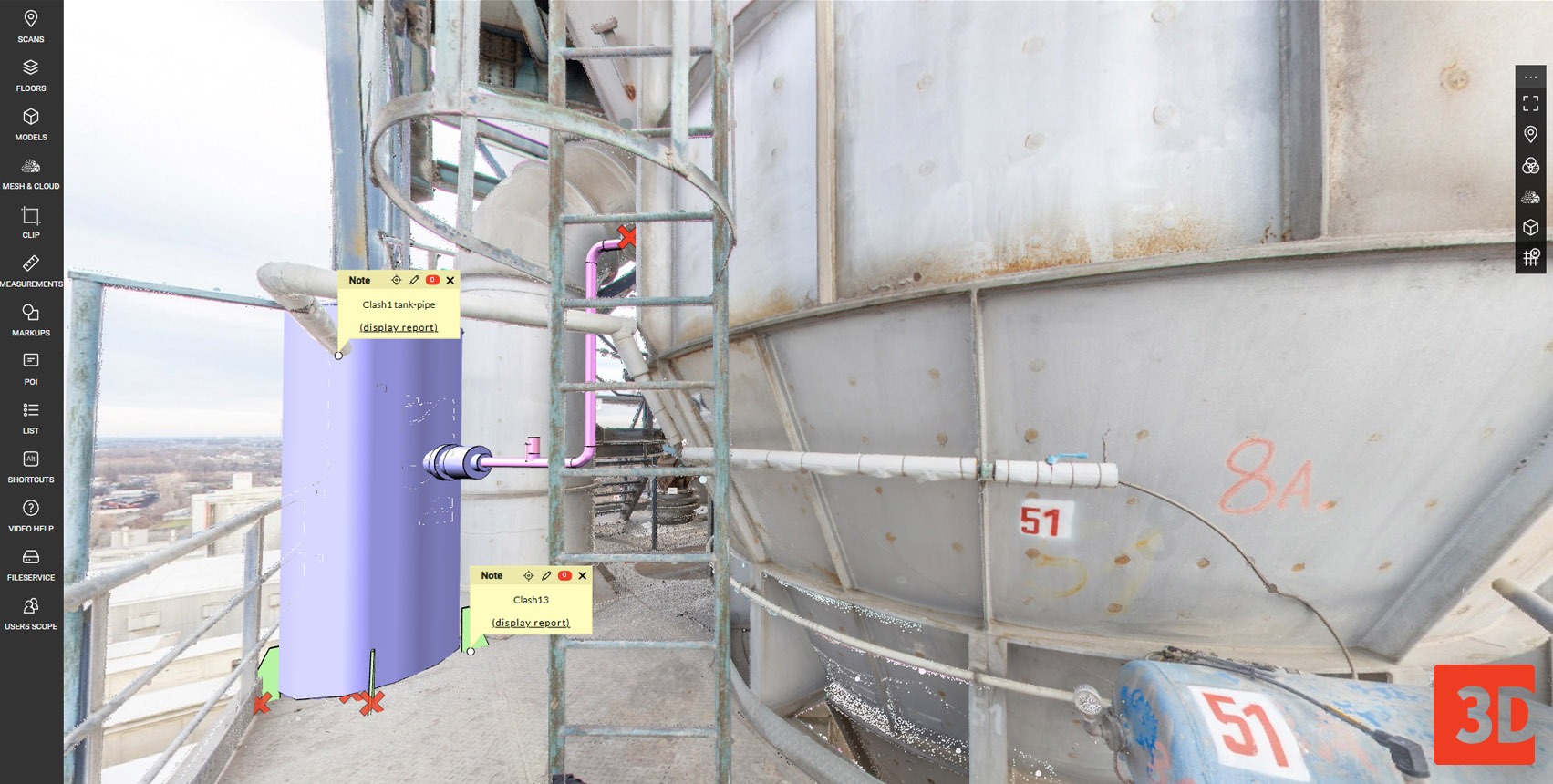BIM (Building Information Modeling) has long been transforming the way we design and manage buildings.
According to Autodesk’s definition of BIM, it is an intelligent 3D model-based process that provides professionals with the insight and tools to plan, design, construct, and manage infrastructure more efficiently.
BIM for Industry takes this concept further — applying it to manufacturing facilities, refineries, power plants, and other complex industrial installations.
Its goal is to create a digital twin that combines geometry with operational data, enabling seamless information exchange across engineering, maintenance, and management teams.
Unlike traditional BIM used in construction, industrial projects often deal with existing, operating facilities.
The main challenge lies in creating an accurate digital model without interrupting production.
This is where 3D laser scanning and platforms such as WebPano Visual Plant, developed by 3Deling, come into play.
3D Laser Scanning: The Foundation of the Digital Twin
The process begins with 3D laser scanning, which captures millions of spatial points to form a high-density point cloud — an exact digital replica of the real environment.
This non-intrusive method allows measurements with sub-centimeter accuracy, minimizing plant downtime.
From this dataset, enhanced with high-resolution panoramic imagery, a 360° virtual environment is created — the core of the industrial digital twin.

360° panoramic view in WebPano Visual Plant
To enhance visualization and geometry analysis, a mesh model (MESH) can be generated.

Mesh model view in WebPano Visual Plant created from a 3D laser scan point cloud
WebPano Visual Plant: From Laser Scans to Intelligent Asset Management
WebPano Visual Plant is a browser-based platform that turns 3D scan data into a powerful industrial asset management system.
No specialized software installation is required — users can access the data anytime, anywhere, directly in a web browser.
This accessibility accelerates teamwork and decision-making, enabling engineers, operators, and managers to work within the same digital environment.
1. Data Integration and Visualization
WebPano Visual Plant merges panoramic 3D visualization with operational datasets. It allows users to integrate:
-
3D discipline models (structural, electrical, piping, mechanical) directly into the point cloud.
-

Point cloud view in WebPano Visual Plant with integrated 3D model of structural elements and safety barriers
P&ID (Piping and Instrumentation Diagrams) — linking process documentation and asset geolocation within one interactive environment.
This feature provides process engineers and maintenance teams with a unified platform that connects process diagrams, equipment data, and 3D visualization — improving cross-department collaboration and operational efficiency.
Watch our short video showing how P&ID integration works in WebPano Visual Plant:
Watch the demo -
CMMS and IoT sensor data, enabling a single platform for maintenance, inspection, and real-time monitoring.
2. Virtual Inspections and Safety
Maintenance and operations teams can perform remote inspections of industrial facilities directly in the digital twin.
This reduces time on site, enhances safety, and lowers travel costs — especially in hazardous zones.
3. Maintenance Management (TPM) and Condition Monitoring (CML)
Every asset in the 3D model can be linked to maintenance history, repair instructions, and real-time monitoring data — for example, CML (Condition Monitoring Location).
This feature enables maintenance engineers to identify, track, and analyze the condition of critical components directly in WebPano Visual Plant, supporting data-driven decisions and predictive maintenance strategies.
Watch how Condition Monitoring Location (CML) works inside WebPano Visual Plant — enabling precise inspection and predictive maintenance without physical site visits.
For a deeper understanding of how CML supports predictive maintenance in industrial facilities, check out our dedicated article:
4. Planning for Expansion and Modernization
WebPano Visual Plant enables virtual installation planning — new equipment can be placed inside the model to identify collisions before implementation.
This drastically minimizes engineering errors and project delays.

WebPano Visual Plant view with a new equipment model and collision detection with existing infrastructure
Benefits of Implementing BIM for Industry
Integrating BIM for Industry through WebPano Visual Plant delivers measurable benefits:
Reduced Costs – Remote access and planning minimize travel and field visits.
Improved Efficiency – Up-to-date data ensures faster collaboration and shorter downtime.
Enhanced Safety – Reduced on-site presence increases worker safety.
Centralized Documentation – One digital source of truth replaces outdated paper and disparate systems.
Why 3Deling?
With over a decade of expertise in 3D laser scanning, BIM modeling, and digital twin technologies, 3Deling delivers high-precision data solutions for industrial, infrastructure, and energy sectors.
Our WebPano Visual Plant platform bridges the gap between engineering design and facility operation — turning complex data into actionable insights.
Learn more about our BIM for Industry solutions
Explore how we create digital twins from laser scans
Conclusion: Digital Transformation with BIM for Industry
BIM for Industry supported by 3Deling’s WebPano Visual Plant is much more than a 3D model — it’s an intelligent visual management tool that enhances collaboration, operational efficiency, and safety.
By integrating 3D data, maintenance systems, and IoT sensors, WebPano empowers industrial companies to take full control of their assets through digital innovation.
